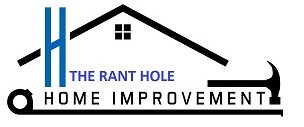What is Radon and Where Does It Come From
Chances are that you have heard the word Radon before. Most people have. They have heard the word and know it’s supposed to be bad, but as far as what it is and where it comes from, most people don’t know. It’s hard to protect yourself and your family from something you know little or nothing about; so here are the basics to help you stay safe.
Many cities in The Bay Area list radon as a major indoor environmental pollutant. When we purchased our home in Oakland a few years ago, we were lucky to find the best contractor in the Oakland area that helped us identify a radon issue that we were able to get fixed before completing the purchase.
What is Radon?
Radon can be found all over. It is a colorless, scentless and radioactive gas that forms as uranium breaks down in the earth’s ground. This means that radon is everywhere in the world.
The radon gas works its way up through the soil and then into the air. The radon in the air then makes its way into your home from cracks and gaps in your home’s foundation. There have also been cases of radon entering a home through well water. This means as you run your kitchen sink or take a shower the steam is releasing radon gas into the air.
Once the gas enters your home it becomes trapped. According to the US Environmental Protection Agency (EPA), 1 out of 15 homes has radon levels that are elevated. You might be wondering, “If radon is everywhere what’s the problem?”

What are the dangers of Radon?
Most people understand the risk of a fire in their home or that smoking causes cancer, so they take action and buy a smoke detector or stop smoking, but what about radon?
Radon is believed to be the second leading cause of lung cancer behind smoking. As a radioactive gas, radon is a carcinogen. The EPA estimates that 21,000 lung cancer deaths each year are caused from radon exposure. If you happen to be a smoker and you have high levels of radon in your home, you actually double your risk of getting lung cancer.
Just as you install carbon monoxide detectors in your home to alert you from possible carbon monoxide poisoning, it’s important that you take action to reduce your exposure to high levels of radon. So, how do you protect yourself from something that you cannot see, hear or smell?
How to protect yourself from radon
You can protect yourself and your family by having the radon levels in your home tested. There are several testing options:
“Do It Yourself” test – You can purchase DIY kits online or at many retailers to self-test the radon levels in your home. There are short term kits, which test the levels over the period of a few to 90 days and there are long term kits that test the levels over a period of 90 days or more. Radon levels can vary with the seasons and long-term test kits can be more reliable.
Have a professional radon contractor test your home for you. You can pay a qualified technician to complete the testing in your home. They can also make recommendations and help you reduce the radon levels in your home if they find that your house has elevated levels.
Since radon is created naturally in the environment you might be wondering if there are solutions that can lower the exposure level in your home; you’re in luck. According to the EPA website, “Some radon reduction systems can reduce radon levels in your home by up to 99%. Even very high levels can be reduced to acceptable levels.
You can make improvements to your existing home by sealing cracks in the foundation to help reduce the radon gas from entering your home in the first place. Some building materials in homes also introduce radon gas into your home, but current building materials are more environmentally friendly for all.
What do I do now?
If you are in the process of buying or selling a home, call in a professional to have your home (or future home) tested. Many buyers are looking for this information when buying a home and elevated radon levels could break the sale of your home.



